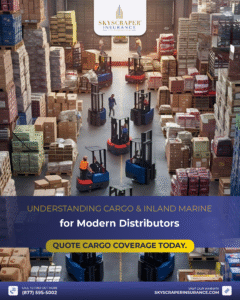Summer is a time for gathering with friends and family, but with more activity and travel comes increased risk of accident and injury. Some of these incidents could cost you thousands of dollars if you don’t have the right insurance coverage.
Here’s how to make sure you’re properly covered for some common summer scenarios so that you can make the most of these highly anticipated sunny months.
Road trips
Piling into the car with friends can be a cost-effective way to travel. But before you drive, it’s wise to check your auto insurance.
“When you’re driving somewhere unfamiliar, the likelihood of an accident goes way up,” says Ted Olsen, a vice president at Goosehead Insurance.
Your state’s minimum required auto insurance may not provide enough coverage if you cause an accident on your trip. You’ll be responsible for crash-related costs, such as medical expenses and repairs.
Olsen recommends choosing more liability car insurance than the minimum required by law. The extra coverage doesn’t cost much and can help protect you from the impact of a personal injury lawsuit, he says.
You may also want comprehensive and collision coverage, says Karen Collins, assistant vice president of personal lines at the American Property Casualty Insurance Association. This coverage is optional, but without it you may have to pay out of pocket to repair your car if it’s damaged. Liability insurance only covers damage you cause to others and their property.
Renting a car
When renting a car, be aware that your current auto policy can affect your rental car insurance.
Your auto insurance typically extends to a rental car, but only for equivalent coverage, Olsen says. So if you don’t have collision coverage on your personal vehicle, you could be on the hook for the cost of repairs if you wreck that brand-new rental car.
If you’d prefer not to add collision and comprehensive to your current auto policy, you can instead purchase a loss-damage waiver at the rental car facility. This waiver means you don’t have to pay for damages if your rental car is wrecked or stolen.
Your credit card may also provide rental car coverage, and buying a stand-alone rental car policy is another option.
Before you rent a car, check your current auto insurance coverage and your credit card’s benefits. Consider buying supplemental coverage if your current auto policy has low limits or is liability-only.
Pool party
Pools can be dangerous, especially for young children. If someone drowns or is injured on your property, you could be personally liable if you don’t have enough liability coverage through your homeowners insurance.
Olsen recommends at least $500,000 in homeowners liability insurance for the average homeowner, and Mark Sherman, a Country Financial insurance agent in Missouri, says pool owners may want more.
Sherman usually suggests at least $1 million in liability insurance for pool owners. It doesn’t add much to the cost, he says, and in the event of an injury lawsuit, “that extra few dollars a month could be the difference between taking care of a terrible situation or losing everything that you’ve worked for your whole life.”
ATVs and dirt bikes
Small motorized vehicles such as ATVs or dirt bikes may not be covered under your auto, homeowners or renters insurance. Any coverage that does extend to these vehicles will likely end at your property line.
“There’s a lot of inexpensive ‘toys’ that people choose not to insure because it’s not required by law. It’s a huge risk point,” Olsen says. “There are a ton of lawsuits and injuries on ATVs.”
The best move is to buy a separate policy for your small motorized vehicles, he says.
Boating
Small boats, like kayaks and canoes, may be minimally protected by homeowners insurance, while motorized boats with more than 25 horsepower are typically not covered.
Olsen recommends buying a separate insurance policy for your boat. “Make sure it’s covered at least for liability, even if it’s not required by law,” he says. “There are optional coverages as well, similar to car insurance. Some people will insure a boat for liability and then in the summer, when they’re actually using it, add comprehensive and collision coverage.”
Consider an umbrella policy
Standard insurance policies — whether for your home, auto, boat, ATV or anything else — typically offer no more than $500,000 in liability coverage, Olsen says. “That’s usually the most you can get, but a lot of people need more than that.”
If you need additional liability coverage, both Olsen and Collins recommend umbrella insurance, which will kick in if you’re sued for damages that are more than your standard insurance policy covers. Olsen says a $1 million umbrella policy typically costs about $300 a year, and Collins says it can be a smart move.
“If there’s potential for a lawsuit, that umbrella policy is usually going to provide substantial benefit,” Collins says.
Taken from https://www.nerdwallet.com/article/insurance/how-much-liability-insurance-you-need









